“What’s in your sandwich? It looks gross.”
It’s a weird moment realizing you are THAT KID at school lunch. Surrounded by bologna, pb&j, and ham and cheese, the shiny, black skin poking out of my eggplant parmesan sandwich did look a bit unusual, I guess.
With my Sicilian father often puttering at the stove, eggplant had been a staple of our dinner menus for as long as I remembered, so it was somewhat shocking to realize my fellow students didn’t recognize the sight of one. Opening the sandwich to reveal the crisp, fried-in-olive-oil crust on what (to me) was a familiar circle of wonderfully spiced flavor, I was greeted by a chorus of “ewwws!”
Eventually, I learned to shrug and keep chewing. It really didn’t matter what they thought because I knew, beyond a shadow of a doubt, that eggplant was delicious. And now that I run my own household’s kitchen, it is as much a staple as it ever was. Blended into a zippy baba gannouj, layered in a moussaka, stir-fried with peppers, baked in a succulent imam bayaldi, simmered in ratatouille, and of course, breaded and lovingly fried into my childhood favorite of eggplant parmesan, this glossy purple fruit is nearly limitless in its uses.
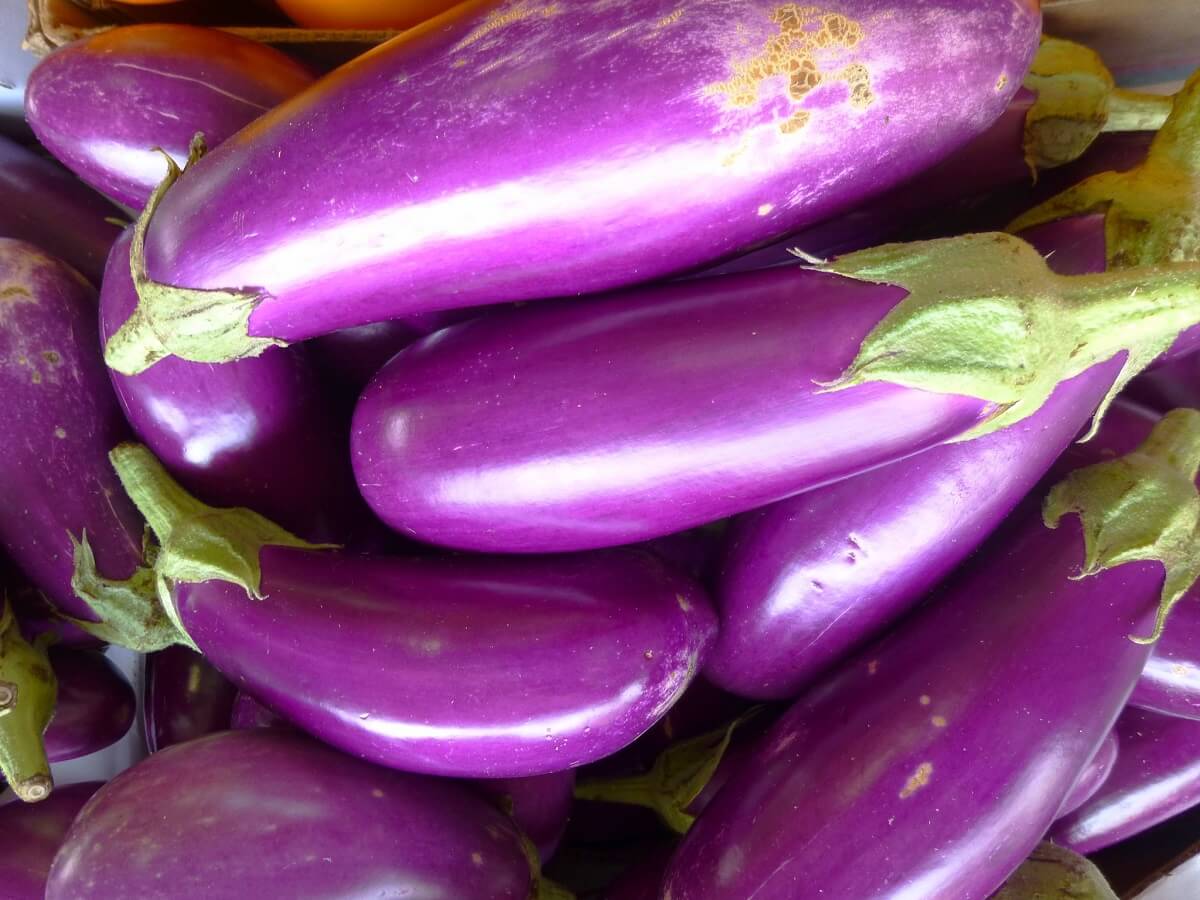
But maybe you grew up unfamiliar with eggplant and even joined the girls wrinkling their noses at my “weird” sandwich. Maybe you are suffering from a lack of familiarity or a serious case of had-crappy-eggplant-once syndrome.
If your experiences with this flavorful berry are only limited to a dish of poorly-prepared, bitter, store-bought eggplant, don’t fret — you can be cured. I challenge you to give eggplant an opportunity in both your garden and kitchen because once you taste that first bite of savory-sweet, tender, homegrown goodness, you’ll be healed entirely.
Requirements For Growing Eggplant
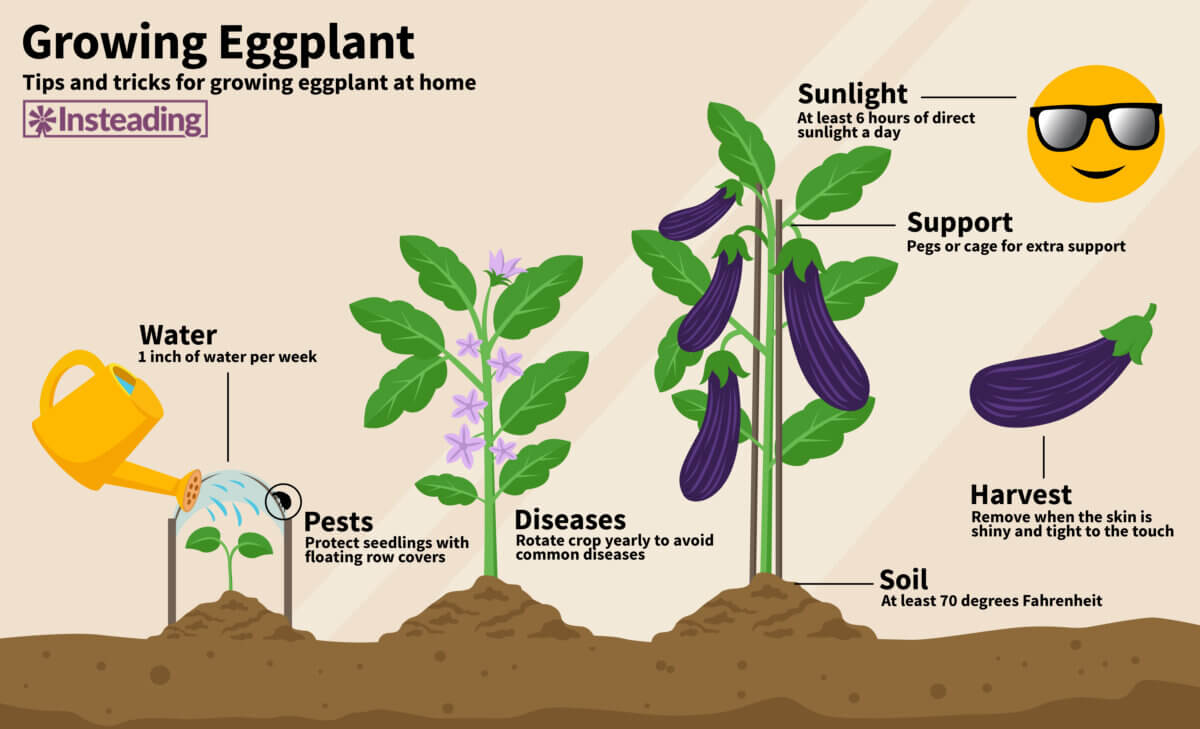
Eggplant has a reputation for being a little difficult to grow, but I believe this comes from a misunderstanding of its needs. And its needs really aren’t demanding — mostly, they’re just hungry for warmth, like their tomato and pepper cousins. Basically, if you feel confident growing tomatoes, eggplant will be easy.
For northern growers with shorter growing seasons, direct sowing may be a challenge due to cold temperatures. However, growing eggplant indoors from seed is one method to mitigate this.
You should sow the seeds ¼ inch deep in small containers. The seedlings will germinate within 7 days, and be ready to be transplanted after 6 to 8 weeks. In order to not shock the seedlings, it is important to harden them off by gradually exposing them to outdoor conditions.
Another idea is growing eggplant in a more readily-warmed raised bed or large pot. The additional benefit of potting your eggplant is that you may be able to bring it in well before the weather turns too cold, and you’ll uncover its secret. It’s actually a perennial!
Before you transplant your seeds, make sure there is ample room for your eggplant to grow. Eggplants should be spaced 18-24 inches apart with rows 2-3 feet apart. They will spread around 3 to 4 feet at maturity with the roots reaching 2 feet deep.
As with most garden vegetables, eggplant needs fertile, well-draining soil with a pH around 6.5. They should be planted in a sunny location with at least 6 hours of direct sunlight a day, and watered about 1 inch per week. Like many nightshades, eggplant requires ample warm temperatures to thrive. The plants really won’t grow until the soil temperature is at least 70 degrees Fahrenheit and will be at risk of damage until the temperature has warmed to mid-70s during the day and the 50s at night.
Additionally, eggplants should be rotated every 3 to 4 years to maintain a nutrient-rich soil. A balanced fertilizer (10-10-10) is often recommended, as it is good for most plant varieties. Commonly known as NPK, this fertilizer is organic matter composed of Nitrogen (N), Phosphorus (P), and Potassium (K).
If you have a long growing season, you can simply direct sow them. Folks around my area of the Ozarks and south know that heat comes quickly in the spring and doesn’t let up for a long time. We may be sweaty, but at least we are growing eggplant that is hearty!
Vertically-speaking, eggplants will grow a few feet tall, then grace themselves with potentially large fruit — similar in style to tomatoes. As such, they’ll benefit from being staked or caged for some extra support. If temperatures fall below 50 degrees Fahrenheit at night, cover them with row covers to keep them warm. Add a decent amount of mulch around the base of the plant to keep it warm and restrict weeds, and you should be on your way to some tasty dinners.
Companion Plants For Eggplants
Eggplants work well as companion plants with beans, peas, tomatoes, spinach, peppers, and marjoram. However, you shouldn’t plant them near others in the same family (tomatoes, potatoes, peppers), as this may accelerate diseases and pests.
Read our full article on: Companion Planting for Eggplant
Harvesting Eggplants
If you’ve direct-seeded your crop, you should expect rewards for your effort around 100 to 150 days from sowing. Transplanted seedlings will be ready sooner. Some people’s bad perceptions of the flavor of eggplant may come from eating eggplant harvested too late. While eggplant is sweet, tender, and soft-seeded during its youth, old eggplant is bitter and features rock-hard seeds. You should avoid harvesting an eggplant that has wrinkly skin, as this is a sign of dehydration. Additionally, if the eggplant has yellow or orange skin and remains indented when touched, it is over-ripe.
The perfect time to pull your harvest, therefore, is when their skin is both shiny and firm to the touch. Use gardening scissors to cut rather than pull the fruit off of plants. I’d always recommend erring on pulling them a little early rather than letting them go too long, as harvesting the fruit also encourages the plant to continue growth and production.
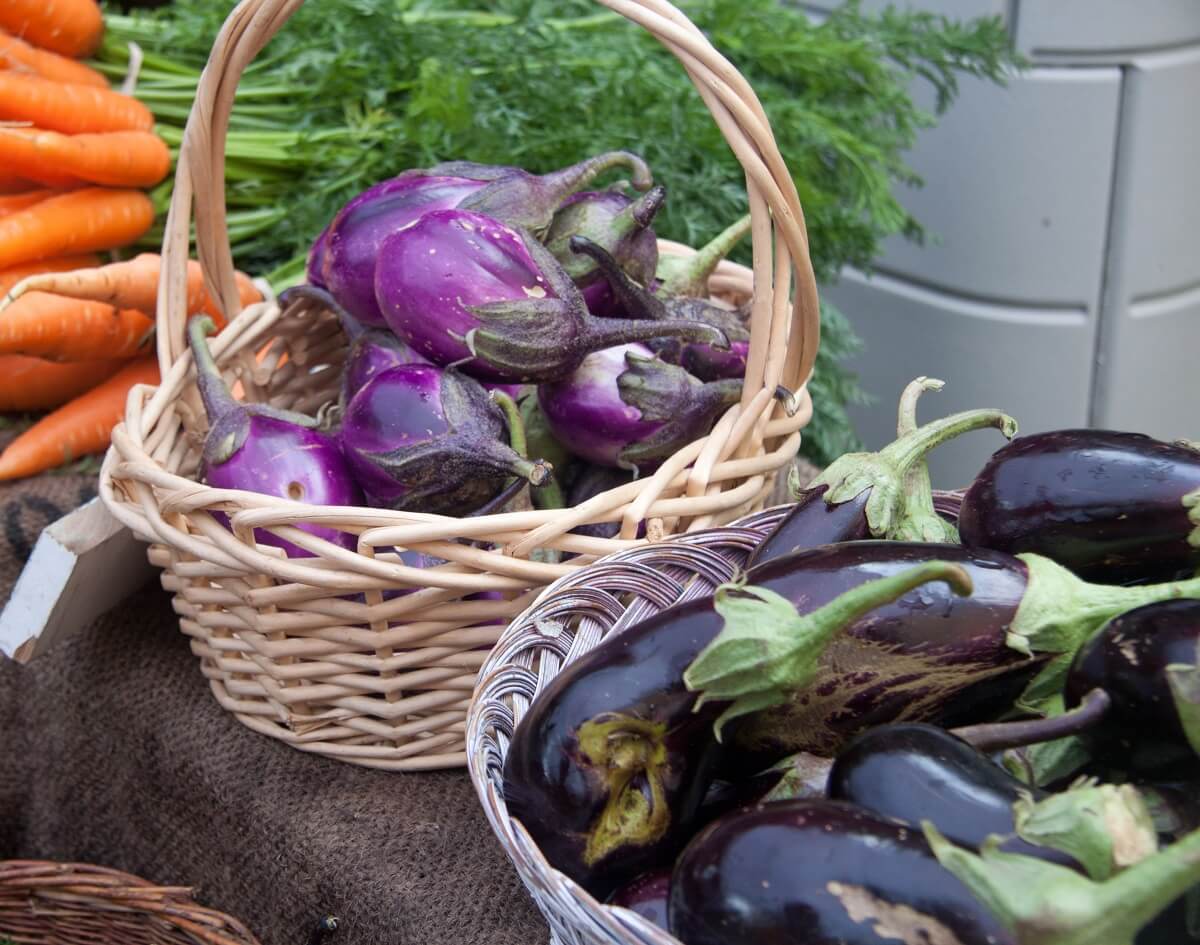
Of course, don’t mourn if you do find a fruit that has lost its luster. Leave it a little longer until it is dull and slightly yellowed, and you can get your seeds for next year. Most eggplant types are annuals, however in some very hot climates, some eggplants can be grown as perennial and they will live for about 3 years.
If you have a limited time to pull in a harvest, consider pinching off blossoms once your plants have 6 to 7. That will help them direct their energy to finishing those fruits without wasting effort on those that won’t ripen before the killing frost.
Troubleshooting Eggplant Pests And Problems
If your eggplant is losing flowers and not developing fruit, it may still be too cold for it to produce.
Flea beetles will probably be another one of your biggest annoyances. They’ll pepper the foliage with tiny holes that slow growth and in particularly infested situations, kill the plant.
Most of the time, flea beetles are more of an irritation than a serious threat. They can only truly affect sick or young plants. If needed, protect your seedlings with floating row covers until they can fend for themselves.
Related Post: How To Get Rid Of Japanese Beetles
The usual suspects of the nightshade-harassing pest clan may also show their faces. Watch out for potato beetles and tomato hornworms. If your garden is a backyard size, you can control these with hand-plucking and well-aimed sprays of water.
The best way to avoid other diseases like Verticillium wilt and powdery mildew is to always rotate your crops. Never plant eggplant or any of its Solanum relatives in the same place that they grew last year. Ideally, you’d want a 4-year interval before any nightshades go back in that spot.
Eggplant Varieties
One of the best things about growing eggplant is discovering the huge array of varieties that exist. Pearl-like white globe eggplant, long, arm-length Asian eggplant, green and red fruits that look almost like tomatoes, an array of shapes that go far beyond the typical classic black store-bought variety. Peruse this list and dream some delicious dreams!
Applegreen
A better choice for northern growers, this bright green fruit is sometimes ready to harvest in as little as 62 days.
Slim Jim
This is a more compact variety that produces smaller fruits that are lavender-purple. They’re a good choice for containers.
Black Beauty
The glossy, black variety you’re used to, this cultivar needs a long growing season.
Fengyuan Purple
A thin-skinned, sweet-fleshed Asian eggplant absolutely fabulous in stir fry. With a lovely shade of purple and long, slender shapes perfect for slicing, you can’t go wrong.
Casper
A white eggplant that cooks up to an incredibly creamy texture. It ripens early, and would be quite eye-catching at a farmer’s market.
As a note for the aware, there is a genetically modified variety of eggplant that has been developed — and not without rightful controversy. Despite the backlash, Bt brinjal was commercially debuted in India during the 2013-2014 growing season. Do your part to protect what genetic diversity you can, and make sure that heirloom crops keep their rightful place in your garden.
Eggplant Background
You don’t need to know the botanical name of Solanum melongena to figure out that this plant belongs to the generous nightshade family. One glance at the purple-tinged flowers and you’ll see remarkable similarities to their pepper and tomato cousins. Unlike the American-originating pepper, tomato, and potato, however, eggplant originally hails from Sri Lanka and India.
Related Post: Growing Tomatoes
Called brinjal in its birthplace, aubergine in Britain and much of Europe, and historically “mad-apple” from a mistranslation of the Italian melanzana, this many-named plant has been a staple of Asian, Mideastern, African, and Mediterranean cuisines for thousands of years. The biggest head scratcher for the westerner, however, may be the name itself. Why do we call it eggplant anyway?
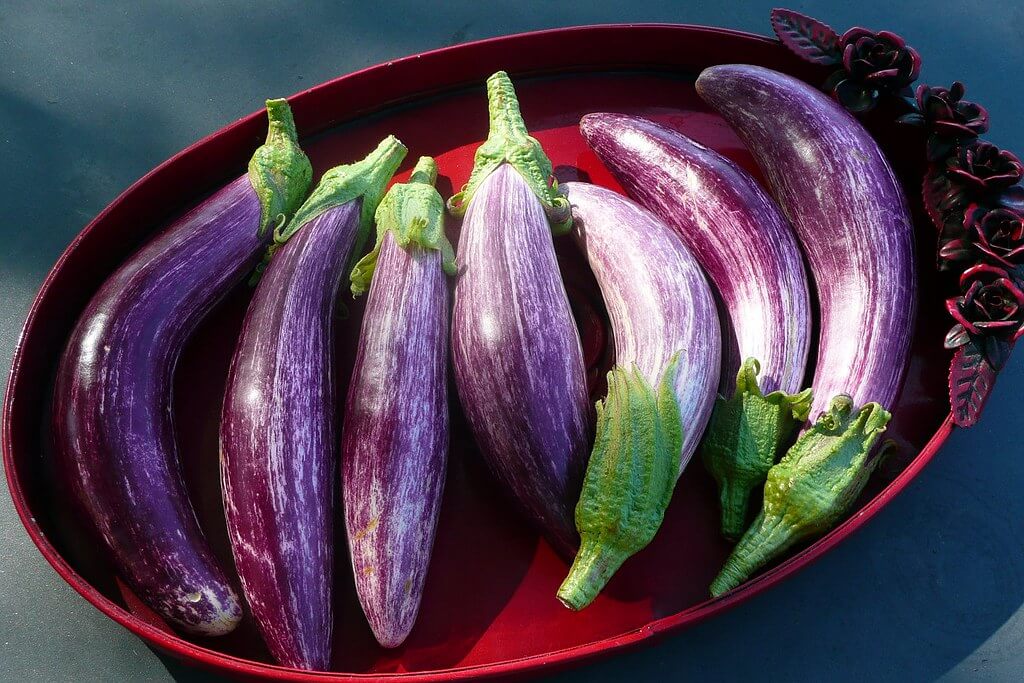
The answer will come clear if you experiment with planting the incredibly wide range of eggplant cultivars that have arisen from the world’s long love affair with this berry. An old cultivar that was introduced to 1500s British gardens is small, white, and egg-shaped, making the association suddenly easy to understand.
Have I convinced you to give it a shot? For those of you who say you don’t like it, why? Can I give you any cooking tips to help you see the light? And if you already understand the delectable opportunities offered by this useful nightshade, what’s your favorite way to use it? Let me know in the comments below!


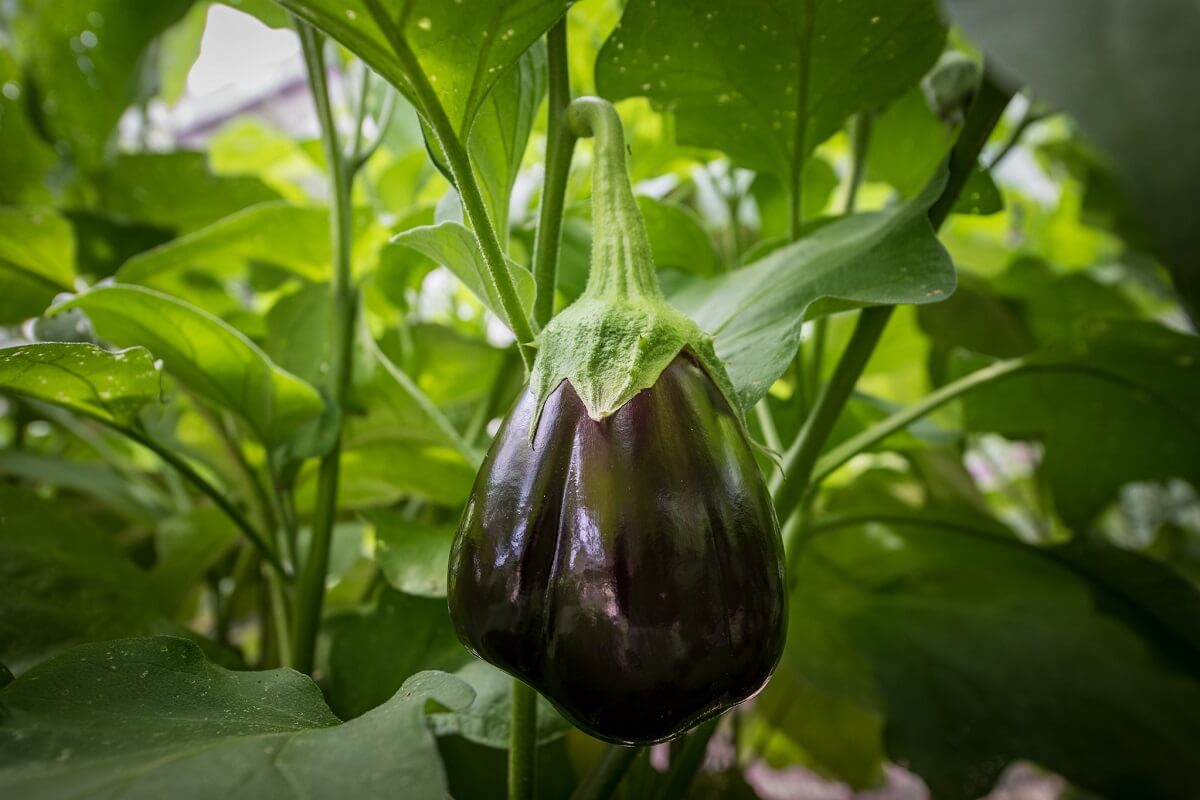
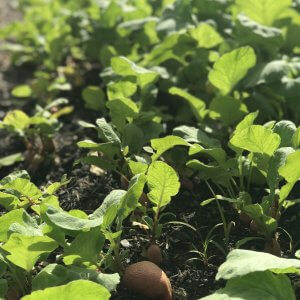
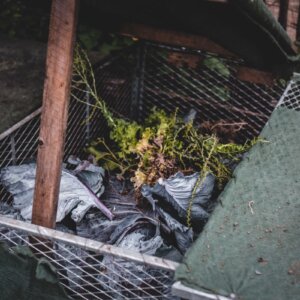






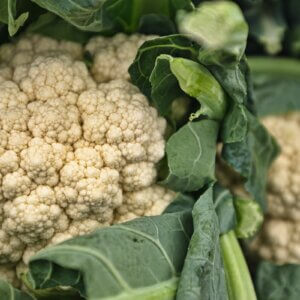


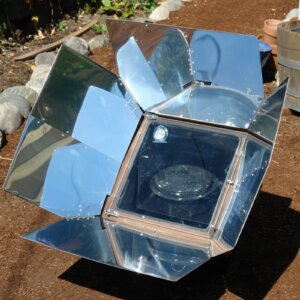



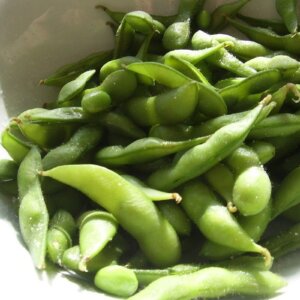
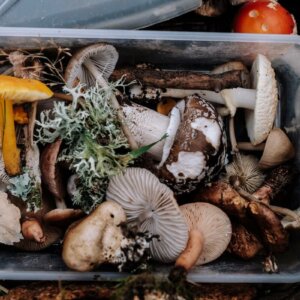


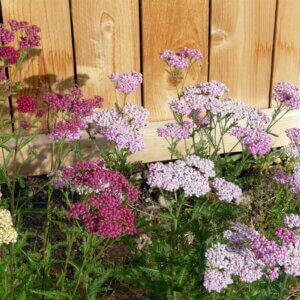





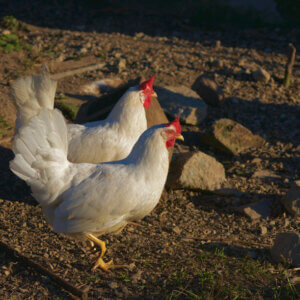
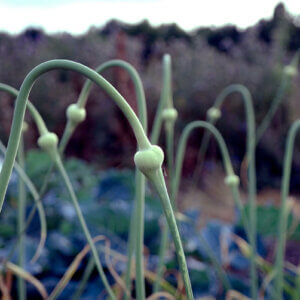

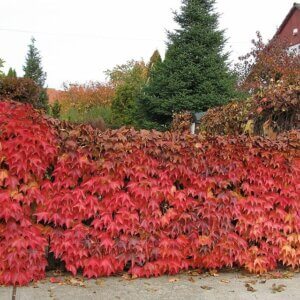











Leave a Reply